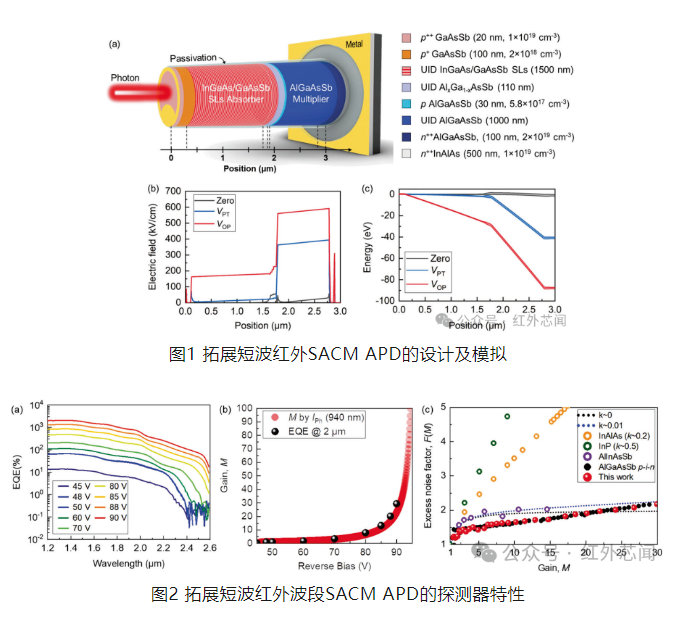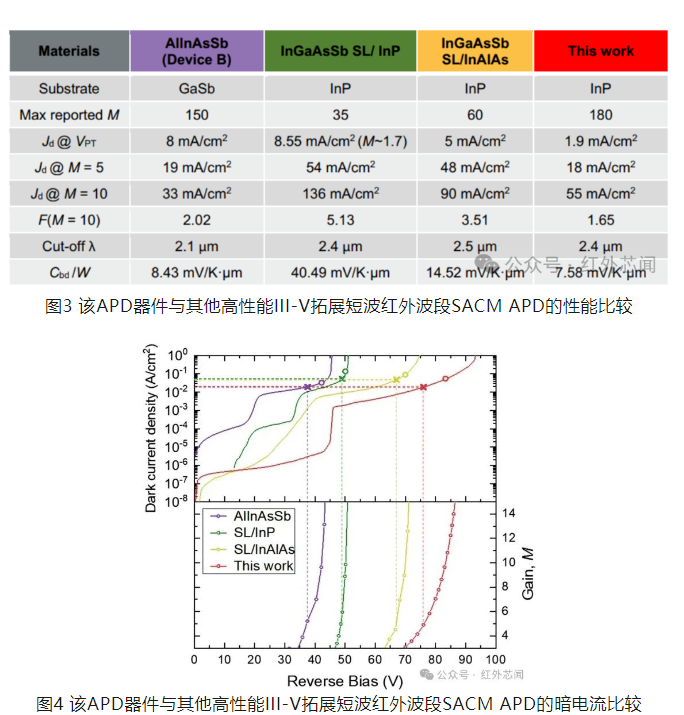12
2024
-
11
High-performance extended shortwave infrared APD photodetectors for high-precision greenhouse gas detection
Author:
Rising concentrations of greenhouse gases, especially methane and carbon dioxide, are driving up global temperatures and exacerbating the climate crisis. Monitoring these gases requires detectors operating in the extended short-wave infrared (~ 2.4 μm,eSWIR) band to cover the wavelengths of methane (1.65 μm) and carbon dioxide (2.05 μm). Previously, the research team at the University of Sheffield in the United Kingdom used a new antimonide avalanche photodiode (APD) to achieve highly sensitive detection in the near-infrared band.
According to Maimes Consulting, recently, a scientific research team composed of Professor John David of the University of Sheffield (University of Sheffield), Dr. Jin Xiao and Krishina Sanjay of Ohio State University (The Ohio State University) in the United States has developed a high-performance APD detector (cutoff at 2.4 μm) that expands the shortwave infrared band, bringing significant progress to the high-precision monitoring of greenhouse gases such as methane and carbon dioxide. The APD detector is based on the innovative design of independent absorption and charge multiplication (SACM) structure of InGaAs/GaAsSb class II superlattice (T2SL) absorption layer and Al0.85Ga0.15AsSb multiplication layer (as shown in fig. 1). it shows excellent detection performance at room temperature, achieving 178 times gain, 3560 quantum efficiency and extremely low noise level (as shown in fig. 2). The relevant research results are published in the article "Low excess noise and high quantum efficiency avalanche photodiodes for beyond 2 μm wavelength detection"Nature communication materialJournal.

In the expansion of short-wave infrared band, the traditional narrow band gap photodetector will produce a higher dark current, resulting in a larger noise, limiting the detection accuracy. For example, detection devices using HgCdTe often need to operate at extremely low temperatures (T =<100K) to reduce dark current, which is inconvenient for applications. The new APD developed this time uses a SACM structure to separate the absorption layer from the multiplication layer, effectively reducing the noise impact caused by dark current, thus achieving a higher signal-to-noise ratio and operating at room temperature without refrigeration.
In addition, the researchers also compared the performance results of the APD device with other high-performance III-V devices. The APD device has a higher effective gain, and the high-quality epitaxial growth greatly reduces the body dark current (Figure 3 and Figure 4). Thanks to the excellent excess noise characteristics and impact ionization properties of AlGaAsSb materials, when the multiplication is equal to M = 10, the excess noise is only F = 1.65. This will significantly improve the sensitivity of the detector receiving module. At the same time, the temperature sensitivity of the device is weak, is also the best of the four devices, so that the receiving end module does not need additional temperature or voltage compensation system. Combining the properties of this APD device, there is a certain improvement in size, weight and power consumption (Swap). SWaP optimization is critical to improving device performance, portability and endurance.

In addition, the unique structure of the APD uses commercial InP substrates combined with well-established material growth techniques, making the device more cost-effective and manufacturable. The low cost and large-area production capacity of InP substrates make this detector expected to achieve large-scale commercialization in the future, which will help to be more widely used in climate change monitoring, environmental science research, industrial emission control and other fields.
The development of this new type of photodetector is an important milestone in greenhouse gas monitoring technology. Its high sensitivity and low noise characteristics will greatly improve the detection accuracy of existing monitoring platforms, especially in ground, aviation and future space missions, to achieve more accurate measurement of greenhouse gases, and contribute to global climate change response and Greenhouse gas emission control.
LATEST NEWS
2024-10-05
Calculation of the diffracted light field: Regarding Fresnel near-field diffraction, how should the field distribution be calculated after a plane wave encounters a metasurface and experiences a phase jump?
Previously, a friend wanted to see the source code for the article 'Matlab Optical Fresnel Diffraction, Dynamic Visualization of Matlab Curves and Graphics', and the source code is included in this article.
2024-11-15
Academician Chang Ruihua's team has made new progress in short-distance optical communication high-speed interconnection technology.
850nm wavelength multimode vertical-cavity surface-emitting lasers (VCSELs) and multimode fibers (MMFs) have become the ideal choice for short-distance optical interconnects in data centers and supercomputing systems due to their low power consumption and cost-effectiveness.
2024-11-18
Wide spectrum heterojunction self-powered photodetector with linear and circular polarization detection capabilities
Two-dimensional (2D) materials have become a hot research topic due to their unique mechanical, optical and physical properties such as broadband response range, layer-dependent band gap, tunable electronic and optical properties, and high carrier mobility.
2024-11-07
Spin-based Schrodinger Cat States Prepared by Laser Cold Atom Method
The spin-based Schrodinger cat state is prepared by laser cold atom method, and its lifetime reaches the order of minutes, which helps to improve the measurement sensitivity of spin precession phase.

